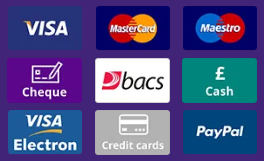Our RECENT POSTS
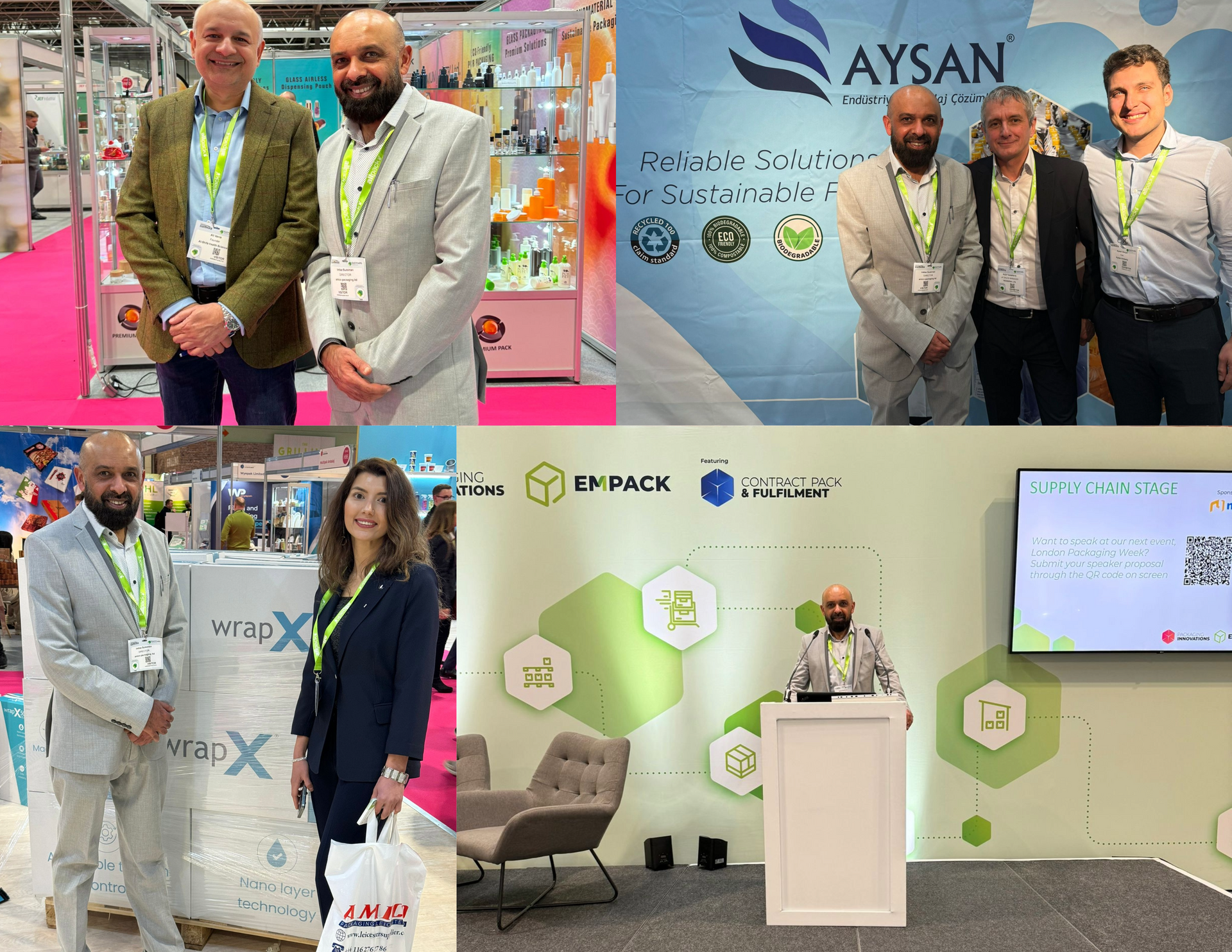
by A.ARORA
•
22 Feb, 2024
Imtiaz Suleman, the CEO of Amico Packaging, recently played a big role in the Packaging Innovation Exhibition. This event is famous for showing the latest technologies and trends in packaging. Mr.Suleman not only showed what Amico Packaging can do but also talked with new business leaders. They shared ideas and talked about new and exciting things happening in the industry. Mr.Suleman discussed with the next generation of business leaders. They shared ideas, and maybe they even started new partnerships. Mr.Suleman really wants to connect people in the industry and try new things in packaging.
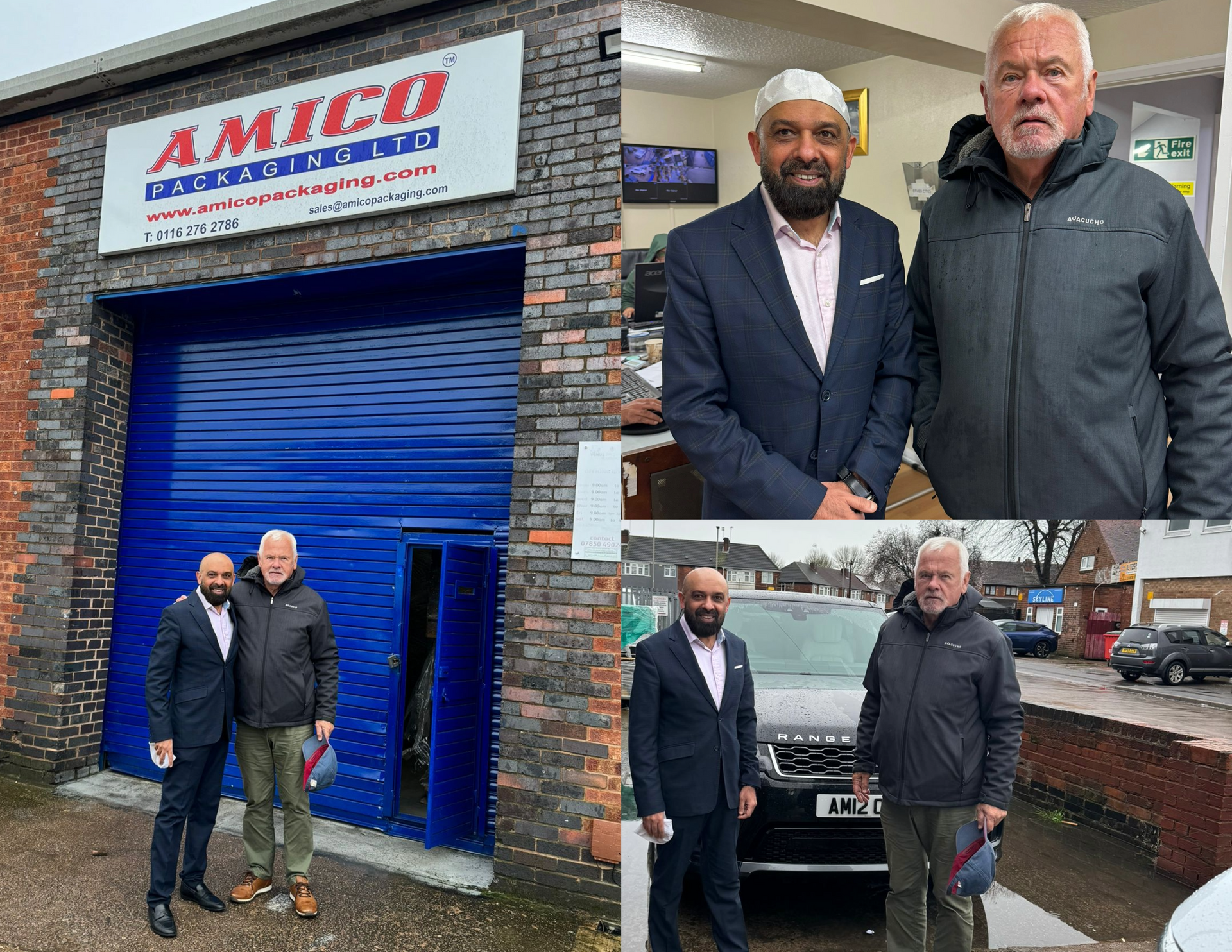
by I SULEMAN
•
22 Feb, 2024
Imtiaz Suleman, the CEO of Amico Packaging Ltd, personally welcomed Bill Adderley and expressed his gratitude for the opportunity to serve such a distinguished customer. The warm welcome extended by the Amico team showcased their commitment to providing exceptional service to clients, regardless of their status in the industry.
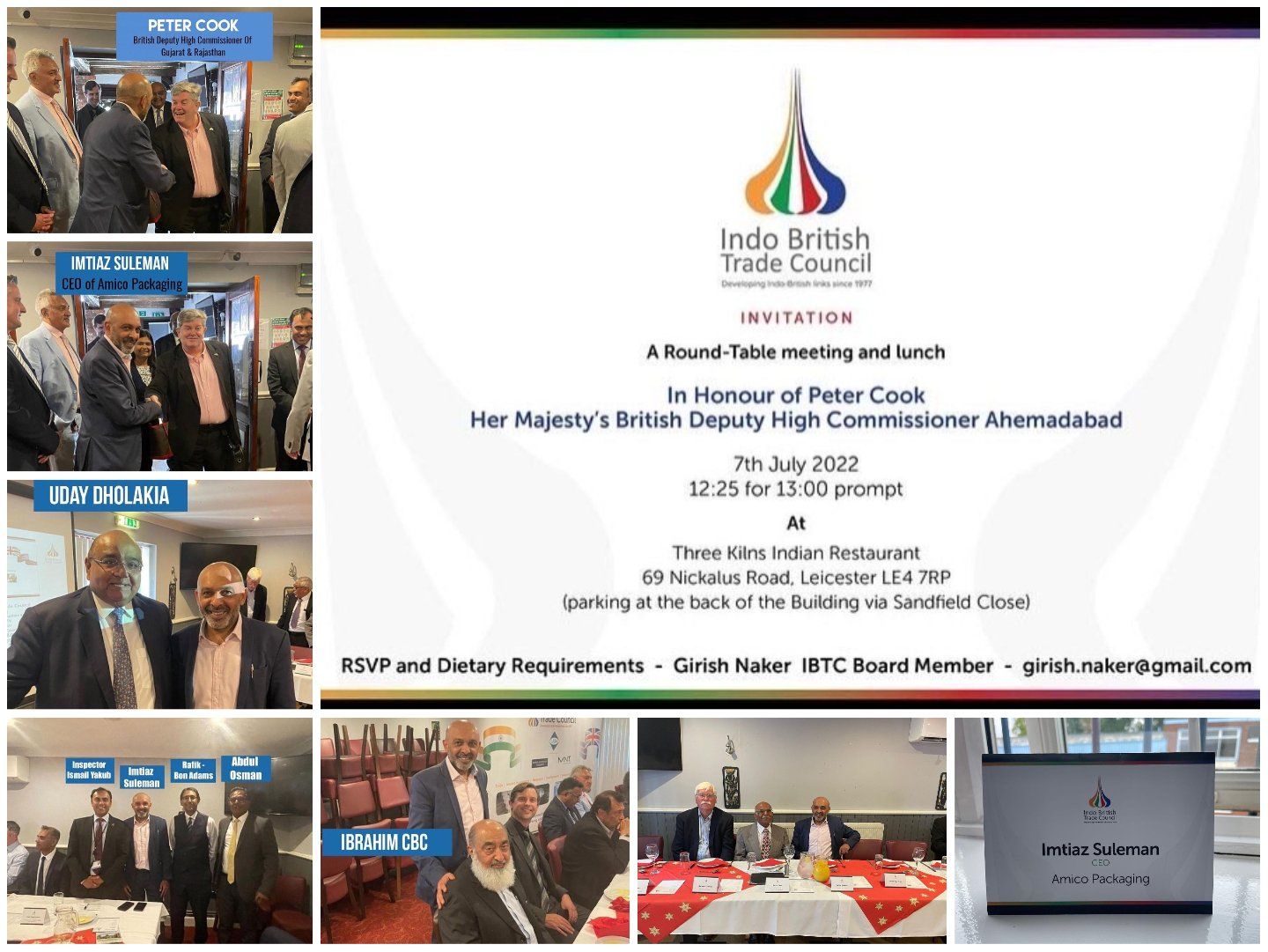
by Listings
•
19 Jul, 2022
Imtiaz Suleman attended the event at The Three Kilns Indian Restaurant in Leicester, UK He also met with Peter Cook, who is Her Majesty's British Deputy High Commissioner For Ahmedabad and Gujarat, India. Imtiaz also met with many other special guests, including Uday Dholakia, Inspector Ismail Yakub, Rafik from Bond Adams Solicitors, Abdul Osman, Ibrahim from Fashion Fabrics, along with many other special guests

23 Jul, 2021
Every year, around one billion disposable coffee cups end up in landfill in separate countries. About 300 million of these, or one third of the national total, are disposed of. The average disposable coffee cup is used for 10–20 minutes. Disposable coffee cups are single use items. By their nature, they have very short life spans, especially considering the many resources such as energy, water and raw materials used to create and transport them. Avoid Consider a re-usable coffee cup campaign in your workplace. Step 1: to start with a baseline, look in your bins to count how many coffee cups your workplace throws away daily. Step 2: talk to staff and seek champions to help set a target and run your campaign. Step 3 : supply re-usable cups to staff. Tip: provide various options for staff to choose their preferred colour, style and size. Step 4 : ask staff to pledge to use their cup while having their photo taken with it. Post these photos to show that everyone is doing it. Step 5: evaluate and celebrate your successes: do a monthly audit of disposable cups to ensure the program maintains momentum. You could also consider: • Negotiating discounts on hot beverages at local caf é s for staff bringing re-usable cups • Using weekly email updates about re-usable cup usage with varied content, including how much waste is being reduced • A reminder sticker on computers for staff to take their re-usable cup with them when buying coffee. Reduce Consider supplying a plunger or percolator to consume beverages on-site. Re-use Retailers can introduce a discount when customers bring their own reusable coffee cup. Workplaces can introduce an incentive program for staff using reusable coffee cups. Workplaces could also provide a pool of re-usable cups available for staff use. This ensures there is a re-usable option when staff or guests don’t have their own cups. Recycle Some disposable coffee cups can be turned into useful items such as re-usable cups, furniture, car park bumpers and storage crates. However, because of the range of different materials used to make them, disposable coffee cups cannot be recycled through the standard yellow recycling bin. To recycle your disposable cup, you can organise a recycling collection. Check with a recycling service provider for the minimum volume needed. Alternatively, you can take disposable coffee cups to a local business that already has a coffee cup collection program in place. What is a disposable coffee cup made from? There is a variety of disposable coffee cups available. Generally, disposable cups have three main components: 1 . Cup – Most cups are made from virgin wood fibre. 2 . Cup lining – The inside of paperboard cups is coated with a polymer lining to provide a waterproof barrier and structural integrity. It is estimated that up to 98% of the disposable coffee cups used in Australia are lined with Low Density Polyethylene (LDPE). 3 . Lids – Cup lids are usually made from High Impact Polystyrene (HIPS). HIPS carries the plastics identification code #6 and is recyclable if it is separated and sent to a separate plastic collection system. Given the composition of disposable coffee cups, there has been some confusion regarding their recyclability. Disposable coffee cups can’t go into a co-mingled recycling bin as existing paper recycling equipment cannot easily separate paper fibres from the polymer lining. Cups in the yellow recycling bin are often rejected as contaminated waste once they reach materials recovery facilities or paper mills, and subsequently land-filled . For buying quality coffee cups visit here
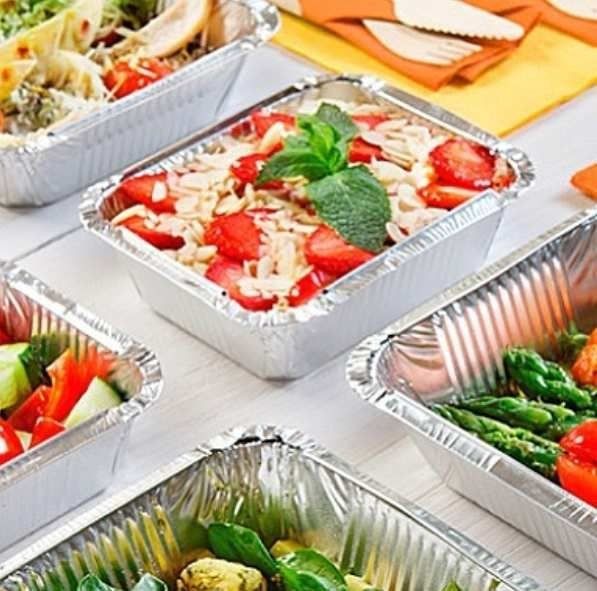
15 Jul, 2021
Aluminium foil (Aluminium foil), also known as aluminium foil, is called tin foil in Hong Kong. It is a tool made of flattened metal aluminium. It is mainly used for cooking in the kitchen, to hold food, or to make something that can be easily made. Clean materials. Hundreds of thousands of tons of aluminium foil are used worldwide to protect and package food, cosmetics and chemicals. Most aluminium foil is shiny on one side and dull on the other. The aluminium foil paper used for food can be wrapped on both sides of the food. Generally, it is recommended to wrap it with a bright surface to improve the heat transfer effect. History: The original tin foil was really made of tin. Tin foil was harder than aluminium foil, and it also brought a tin smell to food. Therefore, after the aluminium price dropped, aluminium foil replaced tin foil in daily life. However, because metal aluminium can affect the development of the brain, the surface of the current aluminium foil is coated with a coating to avoid the release of metal aluminium. Aluminium is used in food containers for different reasons: it provides a very good barrier to protect food against light and air and preserves food quality; it can be recycled and designed individually according to customers’ requirements; it can be produced in different sizes and shapes. In addition, aluminium is a lightweight material and for this reason it has a positive effect on the production costs. Is an aluminium foil container good for use? Aluminium packaging has many advantages over other forms of packaging. For this reason, aluminium food containers are used in a wide range of applications. Here some advantages of aluminium foil trays: Heat conductivity (aluminium distributes heat homogeneously improving the cooking of food in the oven) Hygiene and safety (aluminium is sterile and safe for use in direct contact with foodstuffs) Multi-mode cooking (aluminium containers can be used in traditional oven and with some precautions in microwave too) Sustainability (aluminium foil trays are fully recyclable) Performance (aluminium food containers can be used in the domestic and industrial sectors) Design (round or square, big or small size, these containers can be made to fulfil any number of functions) Functions: Aluminium paper is usually used to carry food (such as: aluminium foil paper trays). When roasting, it is used to wrap bean sprouts, potatoes, sweet potatoes, etc. to prevent them from burning. Sometimes used for decoration. Modern aluminium foil is made of aluminium and can also be used as aluminium electrodes for electrolysis. There are also hairdressers who perm the guests with aluminium foil. Some people also use aluminium foil to absorb the oil in the soup. Aluminium is also widely used for insulation, heat exchange, and as a conductor. Generally, the thickness of aluminium used in paper-packed beverage packaging and food packaging bags is only 6.5 microns. This thin layer of aluminium is water-resistant, umami-resistant, bacteria- and stain-resistant. Uses: Holding Food: It is very common to use aluminium foil paper trays to hold food. Although aluminium foil paper trays are disposable, the composition is aluminium, which is less harmful to nature. Barbecue: Some foods (such as sweet potatoes, mushrooms, etc.) must be wrapped in aluminium foil to avoid burning. It is wrapped in aluminium foil to cook seafood, oyster mushrooms, etc., which can retain the umami flavor. Hair Styling: Some hair stylist will wrap the hair with aluminium foil to heat the hair and have better heat transfer effect. Improper hair using aluminium foil can cause burns and poor hair quality. Oil absorption: After opening the aluminium foil paper in a ball, you can absorb the oil in the soup. The principle is that during the crumpling of aluminium foil paper, the surface tension of the aluminium foil paper will be amplified. If you are looking for quality aluminium food containers you can visit her e
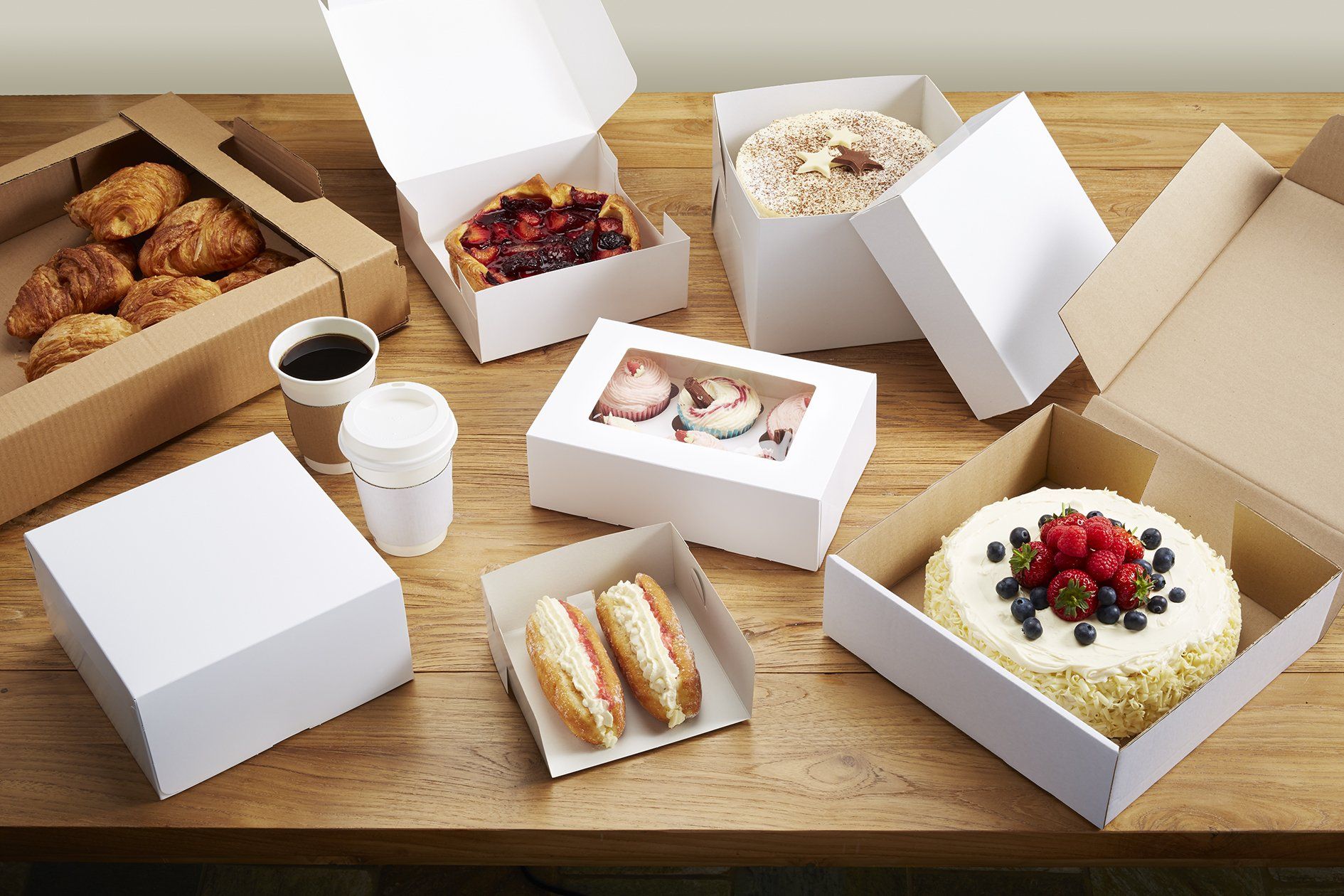
09 Jul, 2021
The paper material is playing a crucial role in packaging industry. And many industries use paper material to manufacture boxes or gifts to pack products. And the paper cake box is also included in this list. If we talk about the advantages of using paper cake boxes, there are many, a few of them being: · Easy manufacturing process. · Able to recycle and green source. · Using the paper as the material of the packaging is healthy and safe, especially for food industries that have close connection to our daily life. · The cosmetic packaging box conforms to the national requirements to call for green life. · Using the paper cake box is convenient and environment protective, so it becomes more and more popular in the packaging industry. In addition, the paper cake box adopts colourful design and exquisite layout to attract customers’ attention. The purpose of the packaging is to arouse the purchasing desire of the customers to buy their products. Thus, there is no doubt that attracting colour and stunning design is the key to attract customers. Experienced designers would like to use warm-toned colour on the paper cake box because the warm colour is easy to increase people’s interest and appetite. Most people would like to buy cake for birthday, so colours that will show happy feeling is more suitable, such as red and pink. Amico Packaging can offer you best paper cake boxes. As for the layout of the paper cake box, it is important to show the design idea or the brand idea of the cake. Some creative ideas are easier to attract customers’ attention. And the reasonable and stunning design of the gift packaging box is also important to the paper cake box. In addition, the paper cake box also has the function of protecting the cake from being polluted. And the hollow design on the bottom is also beneficial to carrying. What’s more, the design of the paper cake box should also be reasonable, such as the height of the paper cake box should be higher than the height of the cake itself. And the height difference as well as width difference should conform to the regulated requirements. Now take a look at those paper cake box products ,you may find your interests. The most important paper cake box advantages f choosing the paper cake box is the exquisite design of the paper cake box. At present, more and more paper materials have been created to manufacture the paper cake box. Therefore, some shining decorations do not owe to the design, but the paper material itself. All the design of the materials and layout is going to increase the appearance of the paper cake box. And the quality of the paper cake box belongs to a part of the whole cake value. Therefore, it is important to pay attention to the colour, layout as well as brand idea of the cake. All these paper cake box advantages increase the whole value of the cake. Types Cake boxes can come in different styles and sizes. Here are among the most common: Fully-enclosed cardboard cake box - This is probably the most common type of cake box. These boxes can be made of brown cardboard or white milk board, often with a glossy outer finish and a matte interior finish. Some can have separate lids while others have a flip lid that is connected to the rest of the box. They come in a variety of sizes to suit just about any size and shape of cake, and can also be used for pies and cookie cakes. Window patisserie box - A window patisserie box is a box with a clear plastic ‘window’ on top of the lid where one can clearly see what is inside the box. These boxes are perfect for cakes that have a special message or decoration on top that you would like to feature. They give people a mouthwatering preview of the sweet treat they are about to eat. They offer great visibility, presentation and visual impact. And because they come in all shapes and sizes, they can also be used for cookies, cupcakes, muffins, tarts, brownies and other pastries. Cupcake box with window - Much like the window patisserie box, the cupcake window box has a ‘window’ on its lid with which you can see the contents of the box. This box however, has an insert made specifically for cupcakes. The inserts ensure that the delicate cupcake icing isn’t damaged while loading or unloading the cupcakes from the box, and also keeps the cupcakes in place while in transport. These boxes are designed specifically for cupcakes, but they can be used for muffins as well. Wondering where to buy cake boxes like these? Look no further than Amico Packaging .

05 Jul, 2021
Confused by the technical jargon or buying refuse sacks, or are you buying a sack which is too strong for your application? This 3 step-guide helps to simplify the jargon to help you chose the right type, size and thickness. Step 1 - Choose the type required Where is the waste going to end up? · If it is going to compost, you will need a compostable sack. · If it is going to landfill: - High security waste (especially in public spaces etc.) Use clear sacks. - General/Domestic Waste - either a black sack or if it is part of a recycling scheme you may want coloured sacks. - Industrial use - Extra heavy duty black sacks or compactor sacks (compactor sacks are available in both black and clear). Step 2 - Calculate the size you need To calculate which size refuse sack is needed for your bin, just use these simple formulas. Round Bin Width of sack= Radius of bin x π (3.14) Length of sack= Length of bin + approx. 15cm for overhang and tying Length Radius Rectangular/Square bin Width of sack= width + depth of bin Length of sack= Height of bin + approx. 15cm for overhang and tying How does the sizing work on a sack? A lot of bin liners are shown as three sizes for example 18x29x39” This is how it works: The first measurement i.e. the 18 is the bottom gusset of the bag, useful if this is approximately the diameter of a round bin or width of a square bin. The second measurement, i.e. the 29 is the top measurement of the sack, double this makes the circumference of your bin top The third measurement is the length of the sack from bottom to top! This is where you need the extra to tie or fold over on your bin or sack holder! Step 3 - Choose your Thickness Not necessarily, so this is where testing comes in. CHSA have devised a scheme to make it easier to understand. Previously it was gauge or micron thickness. Another method is to check the weight of your sacks Consider what kind content will go in the sack. For example, if you know you are going to have heavy refuse then you will need a strong, durable sack, so you will need a 20 kg sack. If it will be used just for paper or other light weight items, you only need a 5 kg sack. Here are some general examples: 5kg - Paper/General Office Waste 10 kg - Domestic Refuse and Recycling 15 kg - Catering Food Waste 20 kg - Industrial Waste Benefits of Using Refuse Sacks One of the most lucrative benefits of switching to refuse sacks made from recycled plastics is the ability to reduce your facility's carbon footprint. By using refuse sacks made from PCR HDPE or PCR LDPE resins, you can help prevent the processing of finite fossil fuels. And when these fossil fuels are burned and processed, they release a myriad of harmful greenhouse gases that helps contribute to global warming. The Environmental Protection Agency estimates the burning of fossil fuels was responsible for 79% of the greenhouse gases emitted in the U.S. in 2010. At the same time, the EPA reports using PCR resins are the greener and more environmentally conscious decision. When your business uses refuse sacks made from recycled plastics, you'll help · Reduce the amount of oil utilized in the development of virgin plastics · Lower CO2 emissions associated with the production of virgin plastics · Help prevent refuse sacks made from virgin resins from ending up on landfills · Limit the consumption of energy associated with the creation of plastics For buying quality refuse sacks visit us here
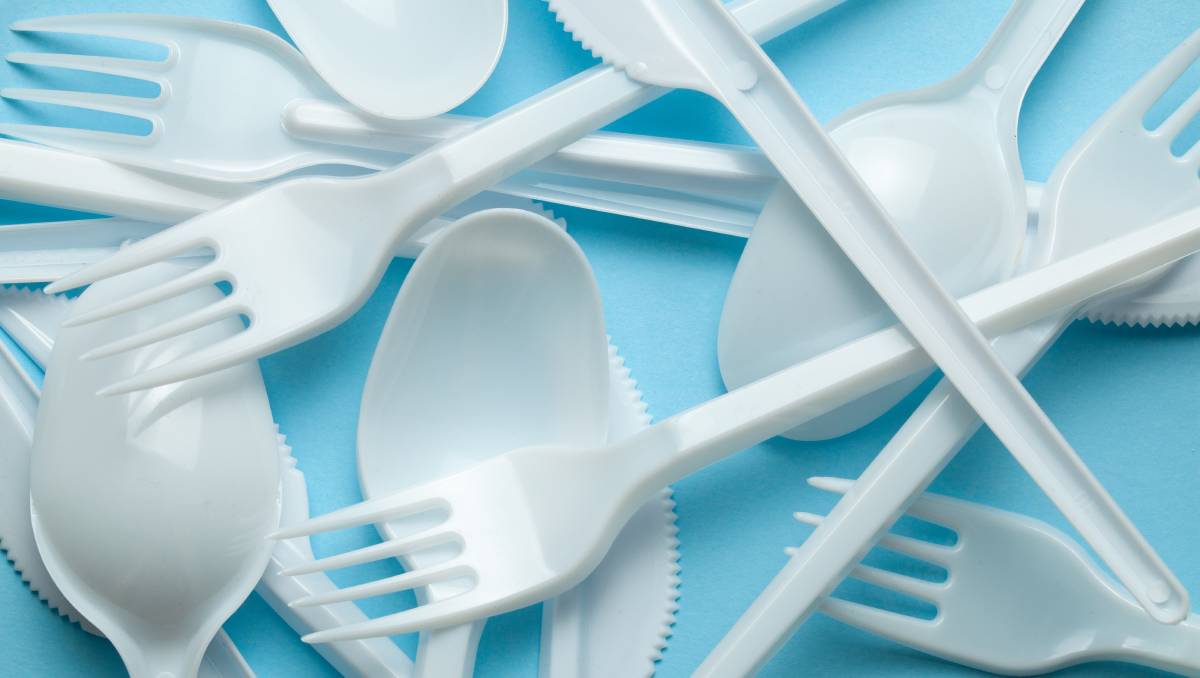
30 Jun, 2021
From plastic materials to eco-friendly materials, disposable cutlery is available in different material types. For instance Plastic Made of plastic it is the most customary kind of disposable cutlery. Plastic cutlery is prepared from either polystyrene or polypropylene. Both the materials are inexpensive and have heat lenience of 180℉* and 250℉* respectively before distortion. Both are available in heavy, medium, and lightweight, in addition to several lengths and sizes. While both are recyclable, yet acceptance might be different by facility and state. PSM (Plant Starch Material) Plant starch materials cutlery is prepared from a mixture of plastic, for instance, polypropylene (20-30%), and PSM (70-80%), such as potato and corn starch. It is costlier in contrast to polystyrene or polypropylene disposable cutlery however could provide cost savings than other eco- friendly disposable cutlery substitute. The plastic constituent offers it the strength and density to crook before breaking and before distortion has heat lenience of 200℉*. However, with technological progressions and the accessibility of other cutlery alternatives, PSM has lost its popularity. Further, it is not eco-friendly. Eco- Friendly Cutlery These cutleries are compostable either at a commercial facility or at home compost. It leaves a smaller carbon footprint as well. It is a combination of wood, moulded fiber, bamboo, as well as CPLA (Crystallized Polylactic Acid). The only drawback is CPLA is inflexible and might breakdown under extreme pressure. Bamboo Bamboo is a fast renewable resource passing as an alternative for disposable cutlery. Even though bamboo is costly than plastic yet it is a certified compostable, lightweight, and smooth. Bamboo disposable cutlery makes an ideal option to exhibit sustainability efforts. Moulded Fiber Moulded fiber is prepared for a mixture of recycled wheat fiber, sugarcane, newsprint, paperboard, and other natural plant material. It is similar in value to bamboo. It is an ideal substitute for facilities that require a safe, not sharp cutlery preference such as in hospitals or prisons. The biggest drawback of moulded fiber becomes soft if it is left to sit in a liquid for too long. Wood Wooden cutlery is the most expensive substitute that can be prepared from various wood types such as poplar, willow, pine, or birch. These cutleries can be manufactured without any chemicals and are certified compostable. However, it is absorbent and porous permitting it to absorb moisture and bacteria from liquids and food. If not appropriately manufactured or else if it has a flaw, it could allow for splintering and cracking of the wood, which could probably cause harm to users. Benefits: Lately, a lot has been heard about the drawbacks of using disposables and they badly affect the environment. Our throwaway society is accused of polluting the sphere, leaving behind tons of garbage that ends up in the seas and cause death. However, at times using disposables is essential to avert infections and the spread of illnesses, for instance. 1-Hygiene – It assures a high level of hygienic standards owing to their mono use, making it particularly important in hospitals or places where the contamination risk is high. 2-Lightweight – These are much lighter than typical silverware which allows you to carry it even in big quantity. 3-Price – Disposable cutlery costs 1/10 in comparison to typical silverware. 4-No need to wash : Mono usage makes it much easier for users to just discard it and also save electricity and water. 5-Convenience: Disposable cutlery is more convenient, particularly if you cater to many individuals. 6-Reusable : It can be reused at times. In this case, it might not save the washing time, but it will be certainly cheaper and lightweight than standard silverware. 7-Biodegradable : As mentioned earlier, disposable cutlery can be biodegradable, which means that the plastic or material utilized is of a diverse kind and vitiate in the environment faster in contrast to the standard plastic, such as PET. So utilizing these types of cutlery is undoubtedly a more conscious optimal for the environment too. Ultimately, disposable cutlery is important to assist in practice the appropriate way of managing its use and helps any company or individual to become more responsible. If you are looking for quality disposable plastic cutlery visit her e
Write a tagline or short description
Write a tagline or short description
Value
Registered Company Name: Amico Packaging Leicester LTD
Registered Address: Unit 4, 166 Tithe Street, Leicester LE5 4BN
Registered Company Number: 08209397
© 2024. The content on this website is owned by us and our licensors. Do not copy any content (including images) without our consent.




